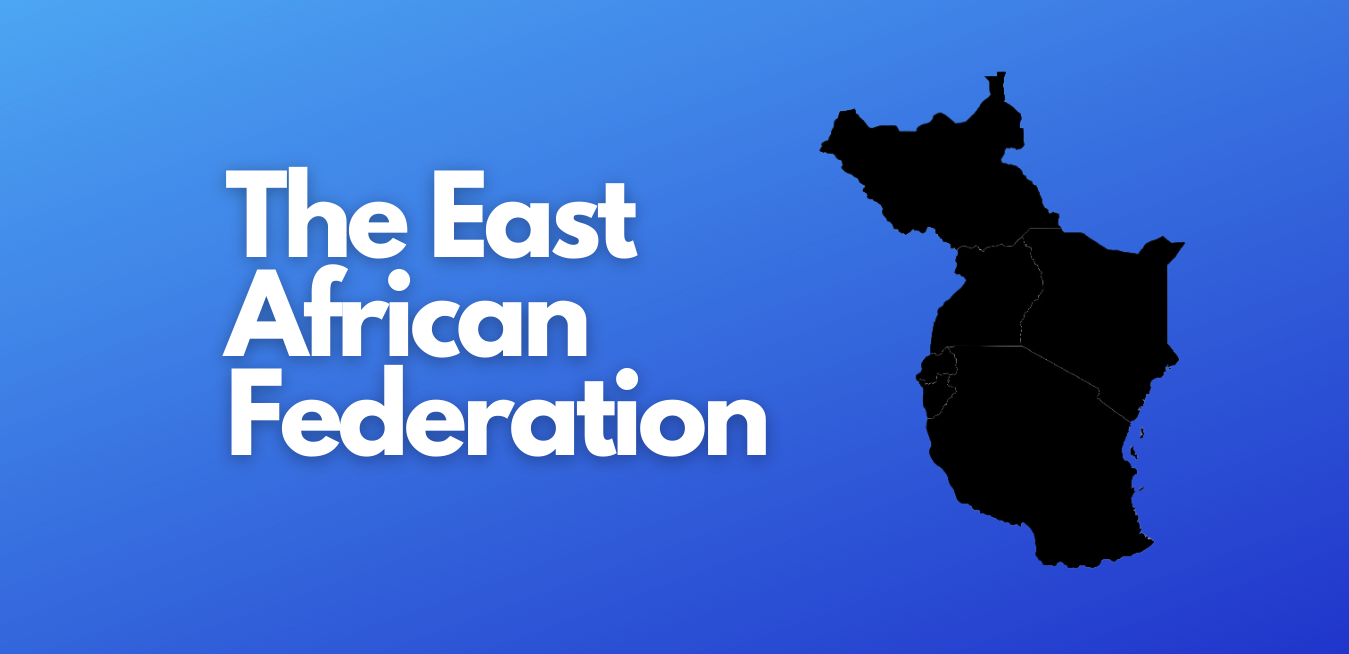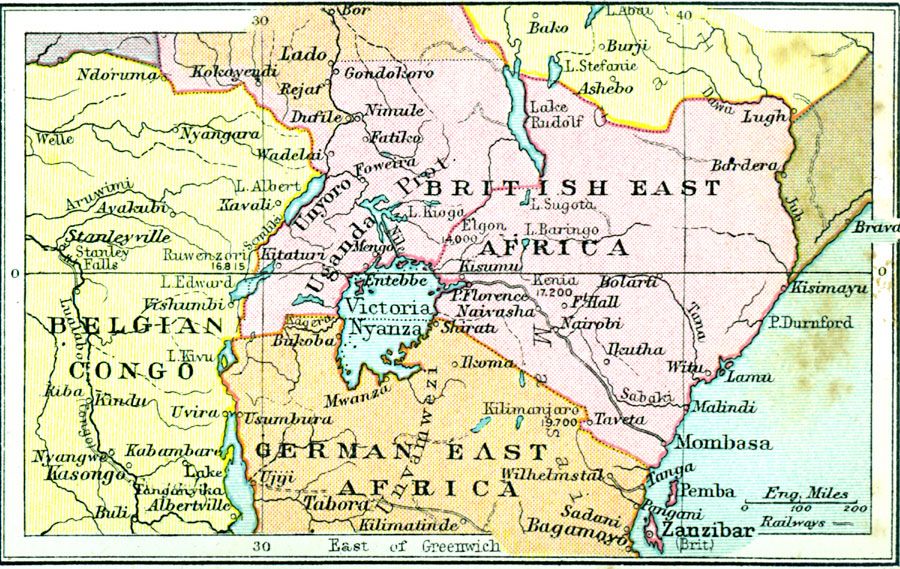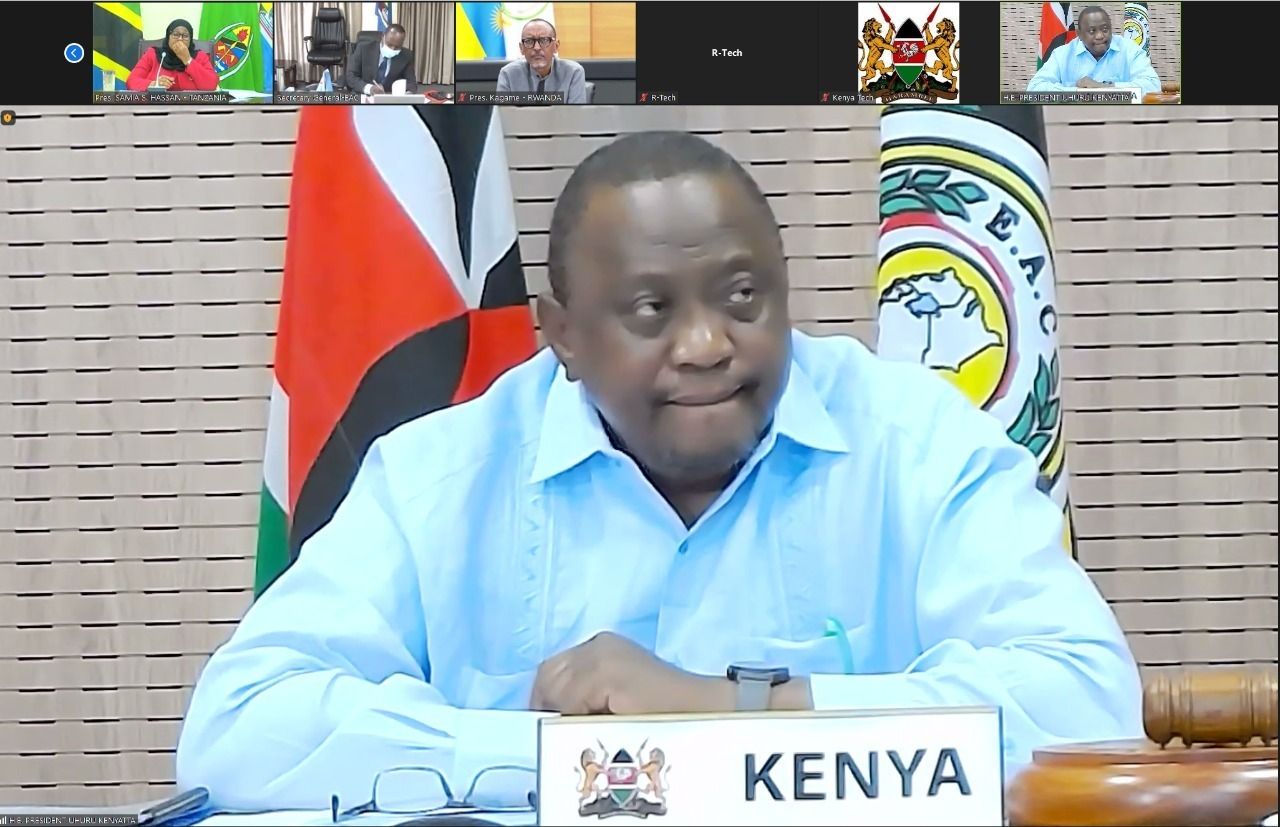An African Superstate: the East African Federation

The fastest-growing region in Africa is also the site of an ongoing political experiment that aims, in the coming years, to have members of the East African Community band together and form the East African Federation - a single African superstate.
The region has had a long history of collaboration, especially between Kenya, Tanzania and Uganda, who cooperated under different agreements and organisations as early as 1917 when Kenya and Uganda formed a customs union. Between the 1960s and 1970s, the three countries created the East African Community (EAC), considered as the precursor to the EAC today which entered into force in 2000.

The original three Partner States were joined by Rwanda and Burundi in 2007, as well as South Sudan in 2016, and from the very start of the EAC, the ultimate goal of the organisation was a single political federation, based on a common set of foreign and security goals, good governance, and the implementation of a blueprint which lays out four different 'Integration Pillars'. The first two stages of these Pillars; forming a Customs Union and a Common Market, have been officially implemented, while the latter two; a Monetary Union and a Political Federation, have met with several political, economic and even historical issues.
As with the European Union, the first step of this political experiment was to create a customs union between all EAC Partner States. This officially entered into force in 2005, leading all current six members to be able to trade among themselves without extra taxes and barriers that might hinder free trade between them. This union also set a common external tariff that anyone trying to import goods to any one of the Partner states will have to pay.
The customs union has allowed the Partner countries to, in theory, increase efficiency in production and logistics, while attracting foreign investment. Following the implementation of the customs union, the EAC has reported a reduction in the time and cost of transporting goods over the borders. The cost of goods coming from the ports of Dar es Salaam, Tanzania and Mombasa, Kenya, have reduced by more than half, while the length of the journey itself decreased. Despite this, the African Regional Integration Index, which calculates how well different African regional groups have managed in integrating different parts of their economy, has noted that EAC Partner States have not made full use of their economies of scale and studies suggest that the common external tariff of the EAC has not always been used to improve the economic welfare of citizens.
“…I re-affirm the commitment of the Summit to the EAC integration process. We are certainly sure that this is an effective vehicle for the economic development and prosperity of the people of East Africa”
In 2010, the EAC officially implemented the Common Market, a natural progression from a customs union, ensuring that nationals of the Partner States, as well as goods, services and capital produced, can move freely within the borders of the Community. Indeed, the most successful aspect of the EAC has been the free movement of people under the Common Market regulations, and to a lesser extent the level of macroeconomic integration, which ensures that capital moves where it could be best spent within the region.
Following the implementation of the second 'Integration Pillar', the EAC turned its sights on forming a Monetary Union. This led to the signing of the East African Monetary Union Protocol in 2013 allowing the Partner States to technically integrate their own currencies into a single currency by harmonising policies, standards and fiscal policies, right before establishing an East African Central Bank. A single currency will ensure that exchange rates can be controlled, which will, in turn, bring in more foreign direct investment. Recognising the important role that the private sector could play in propelling regional financial integration, the 18th Summit of the EAC held in December 2021, pledged to ensure a more structured engagement with the business community as one of its priorities for the years 2022 to 2026.
The fourth and final stage of the 'Integration Pillars' is the formation of a Political Federation. This pillar aims to unite all six Partner States into a single African federal state with a capital in Arusha, today in Tanzania. Unfortunately, it will probably be the most difficult stage to reach. As the example of the European Union has shown us, while there might be a convergence of financial and economic objectives between several member states, political unity is very hard to achieve, especially in democracies, where governments with different priorities are elected every number of years.
The growing level of distrust between the governments of the Partner States, combined with the low levels of public support for this political experiment is proving to be a major challenge to form a politically integrated state. The different heads of state each have their own ambitions that sometimes go contrary to the stated objectives of the proposed Federation, while Partner States have sometimes openly defied the EAC goals in times of crisis. Uganda and Rwanda have had an especially icy relationship over the years, even though there are fragile signs of progress. Their common border, which has been closed for three years after both parties accused each other of supporting opposition groups, just opened in early 2022.
This followed an earlier extraordinary Summit of the EAC in December 2021, where the current Chairperson of the Summit, Kenyan President Uhuru Kenyatta reaffirmed the bloc's political commitment to the objectives of the EAC and claimed that progress is being made with all four 'Integration Pillars'.

Despite the confidence shown by the Kenyan President and the other Heads of State at the Summit, the current goal of forming the East African Federation by 2023 seems too premature in view of these issues and the deadline will, in all likelihood, be pushed back. Political integration will probably become even harder should the Democratic Republic of Congo join the EAC - an event that is likely to happen in the coming months. On the other hand, this will open up the EAC to a new market of 90 million people and access to the Atlantic Ocean.
One could argue that the EAC and its citizens would benefit more from focusing on economic and financial integration rather than a political one. Vertical integration ensures that the Partner States and the DRC focus on removing the remaining barriers to trade and free movement of goods, services, people and capital so that they can enjoy the full benefits of the customs union and the common market. A single currency and the resulting advantages of a Monetary Union will undoubtedly help accelerate this process, but the formation of a Political Federation will do little to improve the lives of the everyday East African.